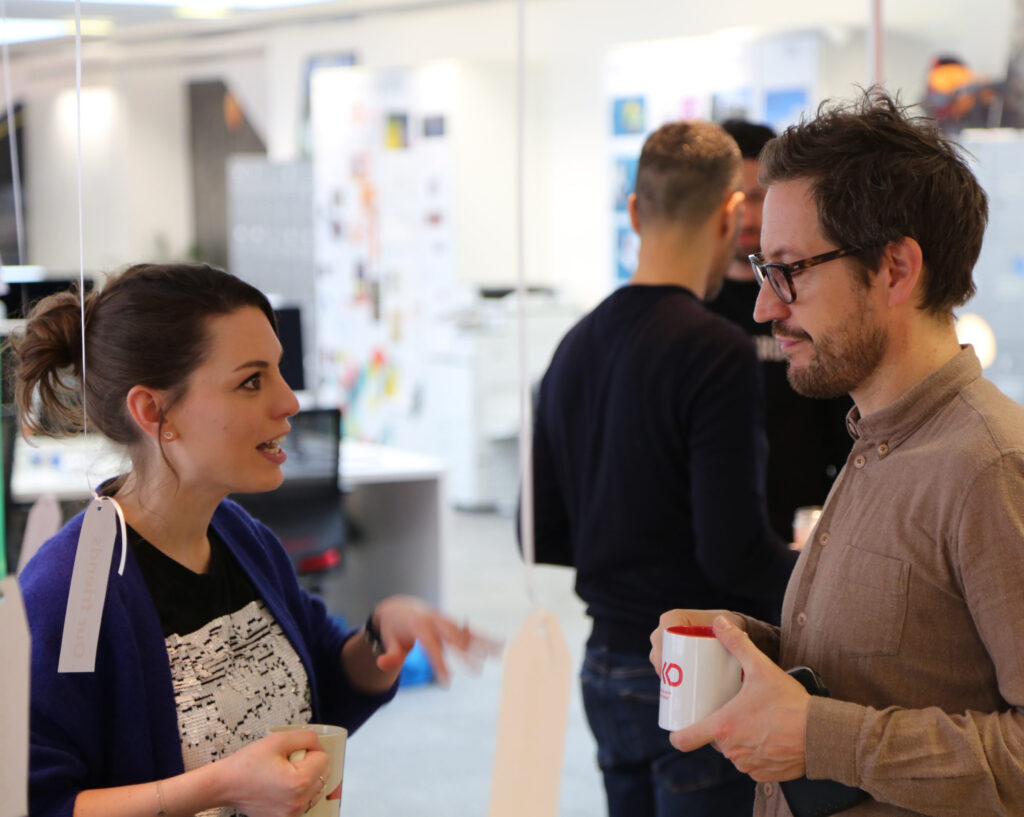Approaching conversations on diversity and inclusion in the workplace
Delving into the Uncomfortable
We can no longer afford to shy away from conversations about diversity and inclusivity.
Noliwe Rooks, Associate Professor, Africana Studies and Feminist, Gender and Sexuality Studies, Contributor at Cornell University explains that, ‘Of course, the problem is that many of us—black and white alike—have been taught that race and racism, like politics and money, are impolite topics […] We are simply uncomfortable talking about race. Because of that discomfort and because we haven’t learned the skills necessary to engage in deep discussions on the topic, we avoid them at all costs.’
In the workplace, these conversations, whilst difficult, are imperative to practicing anti-racism and making it part of corporate culture as workers make it part of their everyday life. In a 2015 study, McKinsey found that ‘organizations ranked in the top quartile of racial diversity are 35% more likely to earn above-average financial returns.’ (HBR) For leaders, there is an imminent responsibility to create the opportunity for workers to not only participate in conversations, but to practice anti-racism and other D+I actions.
Whilst there isn’t a perfect formula, there are a number of steps that if taken, can reduce anxiety, create safe spaces and maintain productive conversations. How do we eat the elephant? Bit by bit.
Introspection and acknowledgement – the feeling of being out of your depth when it comes to these conversations is extremely common and it can be hard to know where to start. But the best place? Yourself.
More than ever, we need to be conscious of our own privileges, biases and perspectives in order to act – these are the questions to ask yourself:
- What are my preconceptions of others?
- How have I been subject to discrimination?
- Have I indirectly/directly expressed my personal biases?
- How does my privilege affect a BIPOC?
- Am I actively practicing anti-racism?
Whilst the possible questions are endless, these ones are a great place to start in broadening your understanding of yourself and your perspective.
Remember, influencing culture change starts with you!
Our top tip: take time out to question yourself and this can help in encouraging others to do the same – this can act as a lubricant to get these conversations going.
Knowledge is power – practicing anti-racism and running successful D+I initiatives requires a process of continuous learning. The question of comfort is removed when people are facing the uncomfortable reality of prejudice and racism every day. The acceptance of continuous learning is much more powerful than avoidance to work on your own terms.
Our top tip: strive to keep learning, keep progressing and get comfortable with getting things wrong.
Intentions – transparency is key to these conversations, particularly when they are often guided through vulnerable and personal topics. Curate an atmosphere of honesty by making your intentions of the conversation clear, not only to provide comfort for someone else, but also the option to opt out.
Remember, BIPOC groups have no obligation to confer if they don’t want to, so removing the tokenistic buck of responsibility from these conversations can help both parties to have more successful conversations. The emotional labour felt by BIPOC workers is key to recognise and understand.
Our top tip: make your intentions clear at the beginning and create a safe and empathetic environment for these conversations to occur.
Where’s the practice in preaching? It is not uncommon knowledge that simply regurgitating information is an ineffective tool for change and these conversations are no different. Put simply, people want to be heard. Driving these conversations with the willingness to learn and listen helps to make these conversations more productive!
Our top tip: make sure you are ‘actively listening’ and your intention is to truly recognise and understand the other person, not to respond with your opinions.
Reaching for help – the recent influx in exposure of helpful resources and organisations is a great tool in itself. To further this, looking for external, as well as internal, help on ways to achieve diversity and inclusion in the workplace could scratch the itch you can’t quite get.
Our top tip: asking for help isn’t a measure of your inability; it shows your want to be better and to get better.
Comparison vs Acknowledgement – often, the inclination can be to focus on the positives and the current, whilst ignoring or brushing over issues to solve. If you’re hearing a lot of phrases such as ‘Well we’re not as bad as ABC’ or ‘At least we’re not doing XYZ’ then there is a focus on comparison for confidence, rather than acknowledgement for change.
We find assertively acknowledging faults, behaviours to change and ways to improve as progress points that can also help to shape personalised D+I schemes.
Our top tip: start small, create achievable goals and regularly check in with yourself.
So… no, there isn’t simple perfect formula for approaching conversations on diversity and inclusivity in the workplace.
But… there is you, and that’s the most important thing.
With the discourse around prejudice and racism in continuous development, our actions need to take the same shape. If you’re looking for a place to start … try being open-minded, try shaking off any preconceived notions you have, and have a willingness to learn. See where that leads you, and we’re sure you’ll find your way!
Ria Kalsi is a student, blogger and content creator who focuses on topics surrounding empowerment, equality and human connection.
